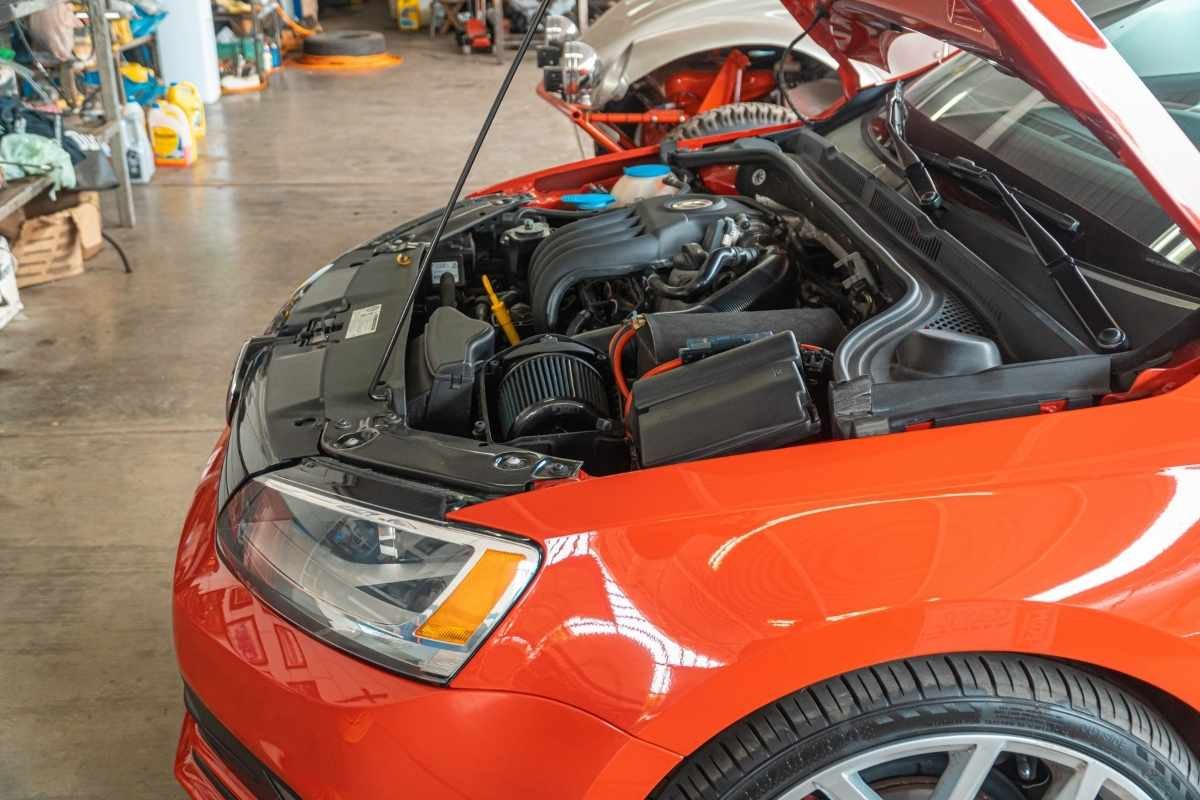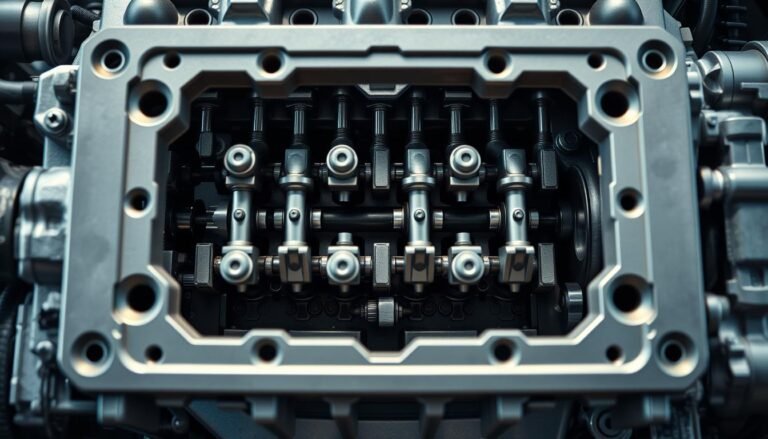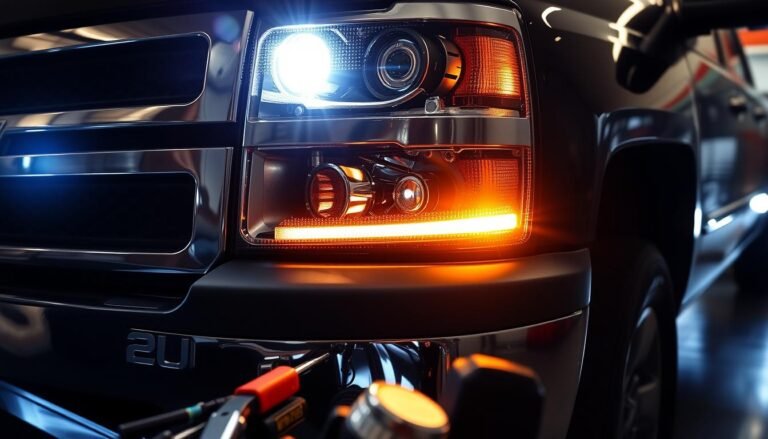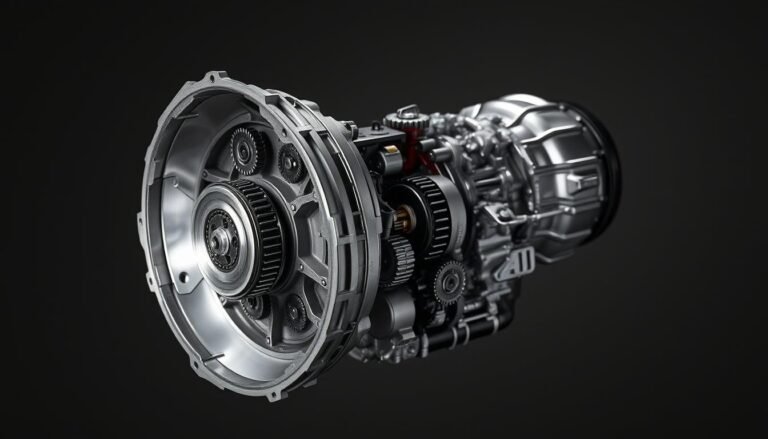GM 6.6 Gas Reliability and Life Expectancy
The GM 6.6L engine gas earned respect for its reliable and powerful performance, making it a pretty decent option to opt for in heavy-duty trucks: the Chevrolet Silverado and the GMC Sierra 2500HD/3500HD.
GM 6.6 gas reliability aggressively tuned to 401 hp and 464 lb-ft of torque, this gas-powered V-8 supplies power reliably without added complexity of a diesel. The GM 6.6 is reliable for its durable design and easy maintenance, this 6.6L gas engine may last from 200,000 to 250,000 miles if well served.
Although some owners cite issues like higher-than-expected oil use, routine maintenance provides for long-term dependability and thus becomes a fine choice for people in search of a potent but low-maintenance powerhouse.
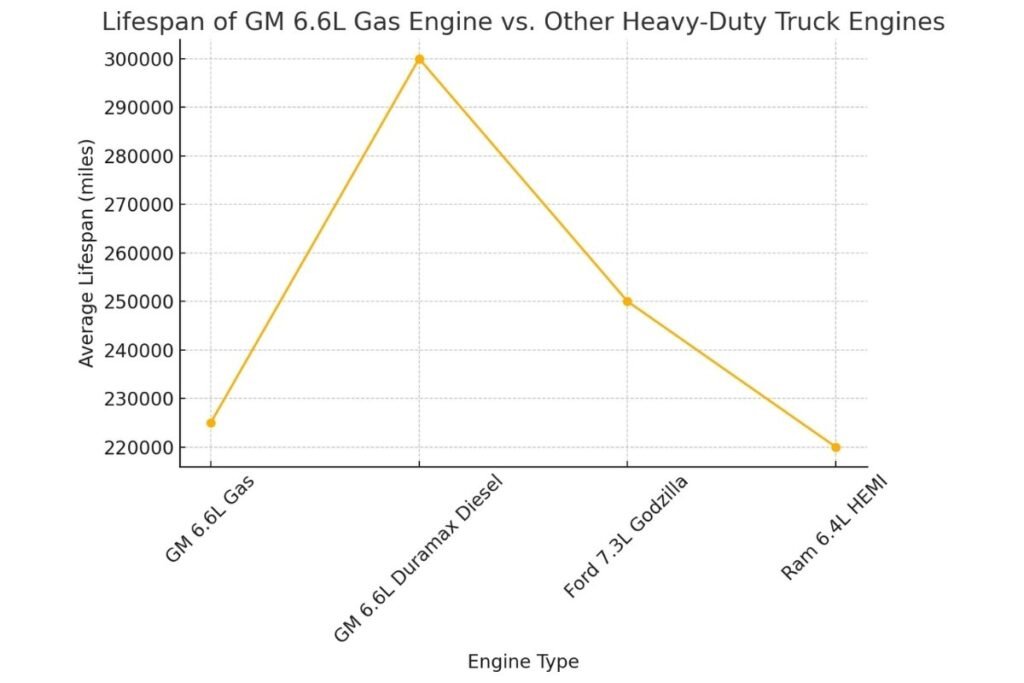
Specifications of the GM 6.6L Gas Engine
| Specification | Details |
| Horsepower | 401 HP |
| Torque | 464 lb-ft |
| Fuel Type | Gasoline |
| Engine Block Material | Cast-Iron |
| Cylinder Configuration | V8 |
| Recommended Maintenance Intervals | Every 6,000 – 7,500 miles |
| Expected Lifespan (mileage) | 200,000 – 250,000 miles |
GM 6.6 Gas Performance Upgrades
The GM 6.6L gas engine is a great, reliable option in the heavy-duty lineup from GM-a lineup engineered to stand up to the toughest tasks and applications required for towing and hauling.
Those who wish to take this engine even further will find a number of good upgrades that can be applied for unlocking extra power, improving throttle response, and making it generally more efficient.
These range from simple ECM tuning and intake system upgrades, all the way to supercharging and exhaust system modifications. Generally, all such modifications tune an owner’s engine for more phenomenal performance than the one it was originally designed for.
While these mods can elevate the 6.6 L output way higher, such modifications call for careful planning and consideration to keep the desired compatibility and retain engine longevity.
The following are popular methods of performance enhancements for the GM 6.6 gas engine:
1. Cold Air Intakes and ECM Tuning
PCM/ECM Tuning includes modification of fuel and ignition settings, adding up to 10 to 15% more horsepower.
It is one thing to take in cooler and denser air, but with the installation of a cold air intake system, it becomes easier for the engine to perform its function, improving throttle response and power.
2. Headers and Exhaust
Performance exhaust systems reduce backpressures to free up horsepower.
These improve the flow of exhaust from the cylinders dramatically and help increase power remarkably, especially at higher RPMs.
3. Supercharger
Just adding a supercharger forces more air into the engine, creating substantial power gains. This may require further modification to the fuel system for optimal performance.
4. Fuel System Upgrades
Upgrading fuel injectors or pumps ensures proper supply to the engine in case of higher demands, which becomes quite necessary if one has gone for ECM tuning or forced induction like supercharging.
5. Ethanol Tuning (E85)
Ethanol-based fuels such as E85 have a higher octane rating to support increased power output due to its higher resistance to engine knock. However, owners should check their availability and compatibility.
6. Final Considerations
Basically, these modifications will void the warranty. Thus, owners should check the terms in their warranty before doing so.
Most of these upgrades, particularly superchargers and headers, are best left to professional installation.
GM 6.6 Gas Reliability Factors Measurement
The GM 6.6L gas engine, introduced in the 2020 cycle of heavy-duty models such as the Chevrolet Silverado and the GMC Sierra 2500HD/3500HD, is highly regarded to have struck an ideal balance between good performance and high reliability.
As such, this paper will seek to explore, in detail, what characteristics make it that reliable. I will take a deeper look at the factors building up its reputation for dependability.
Engine Durability
Longevity Expectations:
Having been built to last, several owners have reported that the 6.6L gas engine runs well to high mileage with only minimal major problems. The longevity of this motor will be determined by how well it’s maintained, such as with periodic oil changes and periodic inspections.
Compared to Other Engines:
Being less complex in structure without some of the complicated ancillaries such as turbochargers and complex emissions controls, the gasoline version is thought to be less stressing during routine maintenance procedures compared to the General Motors 6.6L Duramax Diesel engine.
Conversely, the more torquey and economical Duramax often takes precedence over those deeply concerned with hard-core towing.
Build Quality
The 6.6L gas engine has a cast-iron block with aluminum heads for strength with minimal weight. Inside it, meanwhile, is a forged steel crankshaft and powder-metal connecting rods.
Besides, the absence of Active Fuel Management (AFM) reduces mechanical complexity besides eliminating the possibility of this feature causing problems.
Common Issues Reported
High Oil Consumption:
Some owners have reported excessive oil consumption with this engine, that if unchecked, negatively affects engine performance.
Knocking in the Engine:
Knocking happens at idle, and some think it has to do with the quality of oil used; using a high-grade synthetic usually clears up the problem.
6-Speed Auto Transmission:
Using the 6.6L gas engine with the 6-speed automatic transmission has been tiring some drivers because they said the transmission throttles back acceleration and towing.
Resolution Steps
Maintenance Recommendations:
The manufacturer, GM, began preventive maintenance against the problems, such as oil consumption and engine knocking, with such maintenance as changes of oil and filters.
Software Updates:
GM also issued some software updates with modifications to shift patterns that improved the working performance for those complaining of transmission problems.
Routine Component Inspections:
In general, fuel and exhaust system components should be checked on a periodic basis to find out faults before it is grave.
GM 6.6 gas engine reliability offers a formidable balance between durabililty and performance for heavy-duty use.
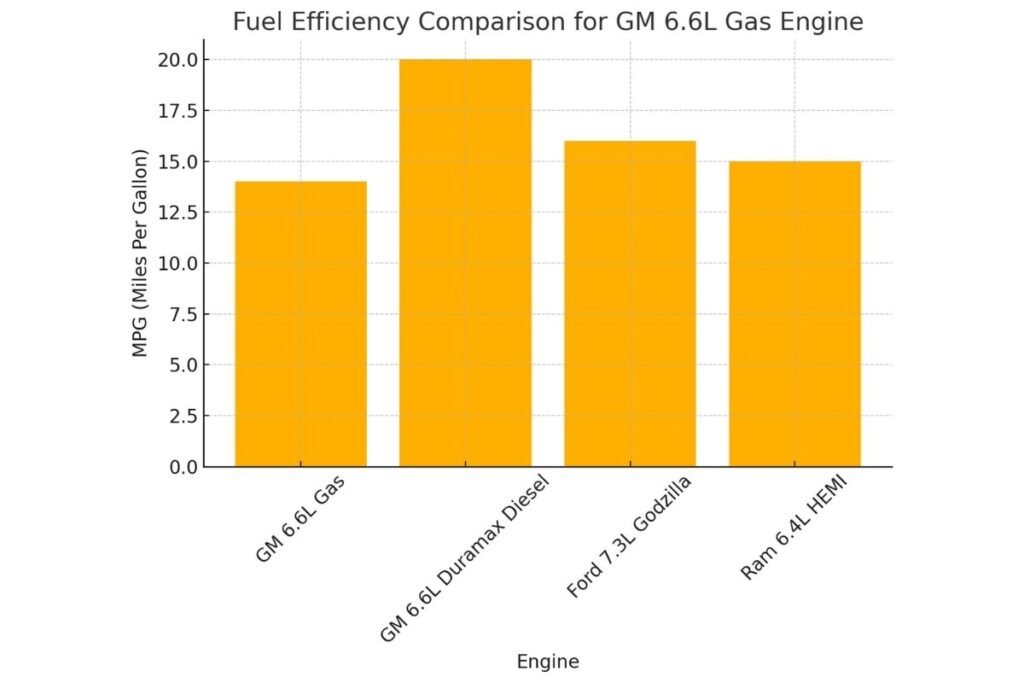
GM 6.6L Gas Engine vs. 6.6L Duramax Diesel Engine
| Feature | GM 6.6L Gas | Duramax Diesel |
| Horsepower | 401 HP | 445 HP |
| Torque | 464 lb-ft | 910 lb-ft |
| Fuel Economy | Lower | Higher |
| Towing Capacity | Lower than Duramax | Higher |
| Maintenance Complexity | Simpler | More Complex |
| Typical Lifespan | 200,000 – 250,000 miles | 300,000+ miles |
| Average Maintenance Cost | $ | $$ |
| Ideal Use Case | General towing and hauling | Heavy-duty towing and sustained loads |
Pros and Cons of the GM 6.6 Gas Engine
The GM 6.6L Gas Engine is a naturally aspirated, direct fuel-injected V-8 that balances power with efficiency, allowing heavy-duty truck owners who don’t need the capabilities of a diesel, the ability to have extra power while also being budget-friendly.
It’s known for its simplicity and easy maintenance features, making it an attractive choice for those looking for serious performance from one versatile package.
Yet it also carries some disadvantages, primarily for those drivers whose mileage usage is very high or for those who need extreme towing.
The following are the advantages and disadvantages of the GM 6.6L gas engine:
Advantages of GM 6.6 Gas Engine
The 6.6L Gas Performance:
401 horsepower and 464 lb-ft of torque are adequate to handle most jobs involving towing and hauling. It is very suitable for use in heavy-duty trucks, where the need for diesel may not be felt.
Ease of Maintenance:
There are fewer complicated components to handle, unlike the turbochargers and advanced emissions control systems that come fitted in their diesel brothers, so maintenance cost and effort is often less onerous with the 6.6L gas engine.
Durable Build Quality:
Constructed with a cast-iron block, aluminum heads, and a forged steel crankshaft, this base engine is built to last. The less complex nature of this design also frees it from Active Fuel Management (AFM), further reducing the possibility of any mechanical malfunctions due to its presence.
Lower Upfront Cost:
On the whole, the gas engine is less expensive than all of GM’s diesel counterparts, making it an economically viable option for those purchasers who do not need or desire the high torque of a diesel engine.
Versatility:
The 6.6L gas engine, although having good, strong performance, doesn’t possess the power and efficiency a diesel would provide. It’s ideal for drivers who want versatility. It fits daily hauls and tows within a wide range.
GM 6.6 Gas Engine Disadvantages
Lower Fuel Efficiency:
Generally, the fuel economy of the gas engine is usually lower compared to GM’s Duramax diesel option; this could increase fuel costs over time, particularly if one always drives over long distances or makes heavy usage.
Less Torque for Towing:
While powerful in its own right, the 6.6L gas engine does not offer as much torque compared to its diesel counterpart. Because of this, it does not make quite as good of a choice when it comes to the towing of very heavy objects. Many seeking maximum towing capacity seem to favor diesels for that reason.
Higher Oil Consumption:
Some reports have come from owners regarding the tendency of the 6.6L gas engine to consume oil a bit faster than one would expect. For this reason, it must be very closely watched and frequently topped off in order to maintain performance and avoid possible issues with the engine.
Pairing Transmission Limitations:
The matching 6-speed automatic transmission in this engine has received very mixed reviews from owners. Some owners believe the transmission does not adequately utilize the power of the engine, which reduces responsive acceleration and towing.
Lessened Longevity for Heavy Use:
While durable, gas engines generally don’t achieve the same lifespan as diesel engines under heavy, sustained use. For long-term, high-mileage heavy-duty needs, a diesel engine may prove more reliable over time.
Maintenance Schedule for GM 6.6L Gas Engine
| Maintenance Task | Recommended Interval (miles) | Approximate Cost | DIY Tips |
| Oil Change | 7,500 | $50 – $100 | Check levels frequently |
| Spark Plug Replacement | 100,000 | $100 – $150 | Use recommended plugs |
| Coolant Flush | 60,000 | $100 – $150 | Flush regularly |
| Transmission Fluid Change | 60,000 | $150 – $200 | Replace as needed |
GM 6.6 Gas Engine Life Expectancy
The GM 6.6L gas engine is engineered for durability, and with good maintenance, generally provides a very solid service life for heavy-duty applications.
Generally speaking-that is, with regular use of hauling and towing but without extreme, high-mileage demands-the engine is likely to last from 200,000 to 250,000 miles.
Much of this derives from several factors:
Build Quality:
The engine has a cast-iron block, aluminum heads, and a forged steel crankshaft-strong in those areas. Besides, being less technologically complicated compared to diesels, the possibilities of higher-order problems are drastically reduced.
Maintenance:
The only sure way to realize the upper limits of its life span is through routine maintenance, timely oil changes, spark plug replacement, and inspections.
Nipping other issues in the bud-such as oil consumption-can also go a long way in preserving good health for this engine.
Usage Patterns:
For those users whose use involves heavy-duty cycles or sustained high-mileage operation—like frequent towing of maximum loads—the service life may be somewhat shorter. In general, gasoline engines do not have the long service life of diesel engines under severe conditions.
Driving Conditions:
Continuous operation in very hot, extremely cold, or very dusty areas may affect engine life, and planned maintenance becomes even more critical.
Estimated Cost for GM 6.6L Gas Engine Over 10 Years
| Cost Factor | Estimated Cost |
| Annual Maintenance | $1,000 – $1,500 |
| Annual Fuel Cost | $2,500 – $3,000 |
| Repair Cost for Common Issues | $500 – $1,000 |
| Depreciation | 30-40% over 10 years |
FAQs
Is the GM 6.6 Gas Engine Reliable?
Yes, the GM 6.6L gas engine is reliable and will generally last very long if maintained correctly. Owners report high mileage with very few issues, which goes a long way in proving how durable the engine can be.
What Are Common Problems With the GM 6.6 Gas Engine?
Yes, the GM 6.6L gas engine is reliable and will generally last very long if maintained correctly. Owners report high mileage with very few issues, which goes a long way in proving how durable the engine can be.
What Are Common Problems With the GM 6.6 Gas Engine?
Some owners have reported that this GM 6.6L gasoline engine uses more oil than ‘normal’, and these owners have complained about engine knocking noise, which usually is closely related to oil quality.
There are complaints against the 6-speed auto transmission mated to this engine – that the transmission can not rightly exploit the potential of the motor for less than expected acceleration and towing.
How Does the GM 6.6 Gas Engine Compare to the Duramax Diesel?
However, the 6.6L gas engine design is less complicated because it has fewer components than a Duramax diesel engine, including turbochargers and sophisticated emissions systems, which could minimize maintenance requirements.
The Duramax diesel has a higher torque output with better fuel economy, making it more appealing for heavy-duty towing.
What Is the Life Expectancy of the GM 6.6 Gas Engine?
What Is the Life Expectancy of the GM 6.6 Gas Engine?
The GM 6.6L gas engine can reach mileage of 200,000 to 250,000 miles, provided routine maintenance is carried out on schedule, depending on driving and usage conditions.
Is the GM 6.6 Gas Engine Any Good to Tow With?
The GM 6.6L gas engine serves pretty well for most people’s towing requirements. It features 401 horsepower and 464 lb-ft of torque. For extremely heavy hauls, however, the Duramax diesel engine has significantly more torque and would thus be better.
What Does the Routine Maintenance on a GM 6.6 Gas Engine Entail?
But regular oil and filter changes, timely spark plug replacements, and periodic inspections are vital to maintain reliability and longevity of the engine.
Are There Any Recalls on the GM 6.6 Gas Engine?
Currently, there are no major recalls that have targeted the GM 6.6L gas engine. However, it is best to verify this with GM or any of its authorized dealers for the most updated information.
Does the GM 6.6 Gas Engine Have Active Fuel Management (AFM)?
No, it does not have AFM, which simply reduces mechanical complexity and lessens problems that might develop with an AFM system.
What Kind of Fuel Economy Does the GM 6.6 Gas Have?
The fuel economy with the GM 6.6L gas engine is generally lower compared to the GM Duramax diesel option, which will raise fuel costs over time, especially if driven at long distances frequently or under heavy use.
How Does the GM 6.6 Gas Engine Perform in Cold Weather?
The 6.6L gas engine by GM does quite well in cold conditions, of course assuming proper maintenance of the car and cold-weather preparations. Such things would include using the appropriate oil viscosity, making sure the battery is in good condition.

